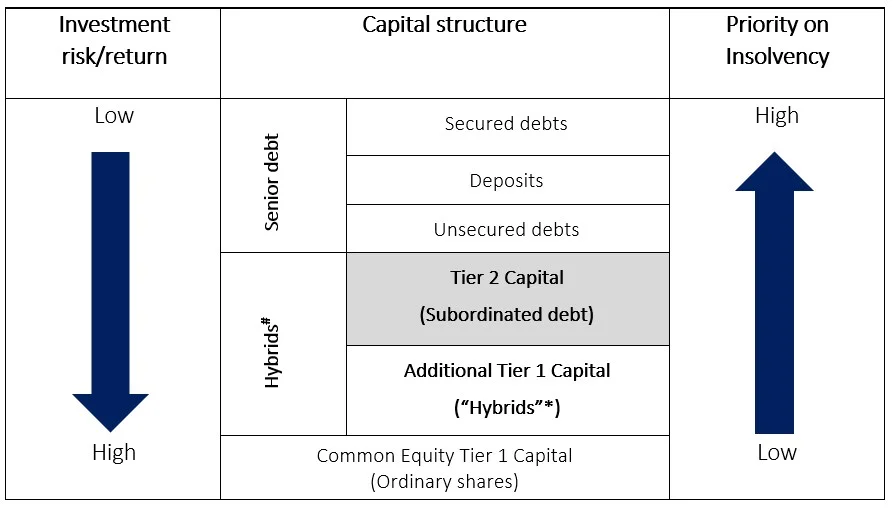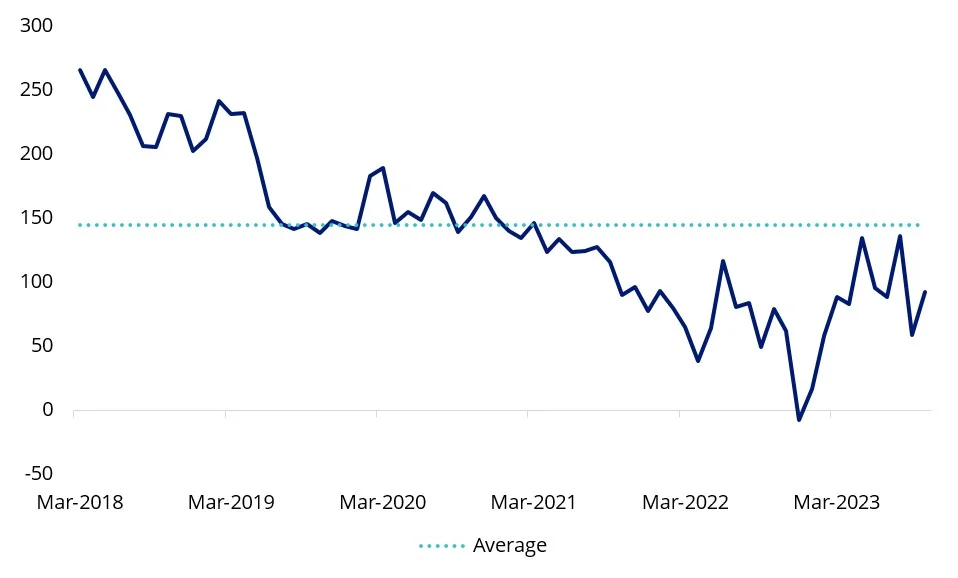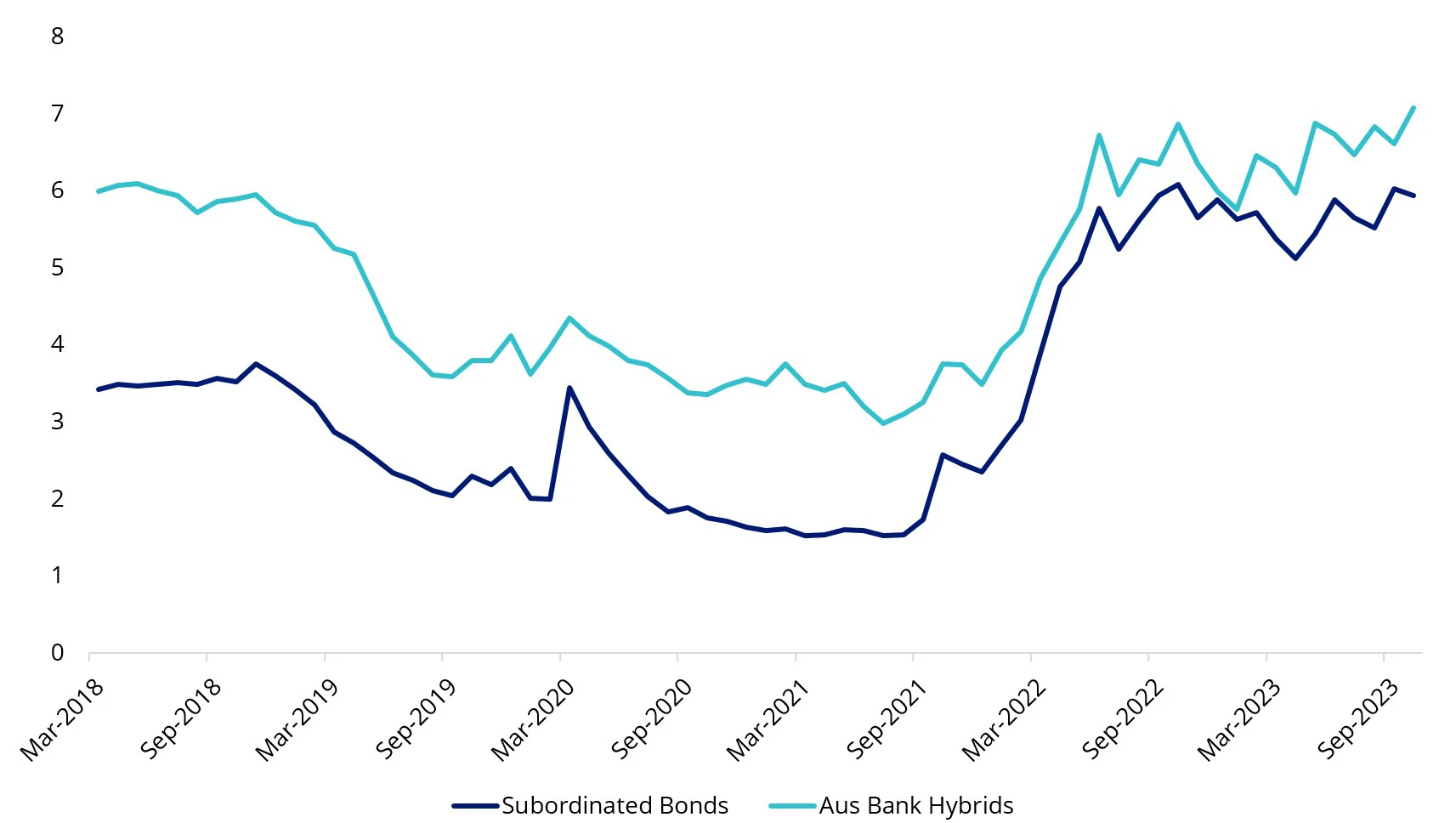Getting ahead of changing bank hybrid rules
Expected regulatory changes could put further pressure on Australian Bank Hybrids. Nevertheless, investors have another type of 'convertible' securities to consider.
Australian bank hybrids were in the news recently when it became apparent the Australian Prudential Regulatory Authority (APRA) is considering restricting retail-investor ownership of hybrids. ASIC has in the past warned investors about the risks of hybrids and APRA’s potential restriction would be consistent with global peers, such as the UK which banned hybrids for retail investors in 2014.
Hybrids, also known as additional tier one or AT1 securities, are mainly issued by banks and insurers. They are debt-like in that they pay attractive income but are equity-like in that they can be written off or converted to shares in extreme scenarios. APRA is concerned that because of the unique dynamics in Australia, AT1 capital instruments may not operate as intended if required and it is expected any of their proposed changes would make issuing Australian bank hybrids more expensive.
But AT1s are not the only ‘convertible’ security. Following the fallout from the GFC, Australian Banks have also been required to hold Tier 2 capital. Tier 2 capital are also known as ‘subordinated debt’ or ‘subordinated bonds’, and we think they are currently an opportunity for income-seeking investors. With regulatory pressure expected to make hybrids more expensive to issue, subordinated debt could be a consideration for investors to earn a similar yield as bank hybrids and shares, despite being higher up the bank capital structure.
Tier 2 capital
Subordinated bonds form part of the buffer that banks are required to have in order to absorb potential losses in the event of financial distress and were mandated in response to the fallout of the GFC. Tier 2 capital is used to protect depositors and policyholders so that they can feel confident their money is safe. It also protects taxpayers from costly bail-outs.
Subordinated bonds have similar characteristics to traditional bonds, however in times of financial stress they can be converted to shares or may be written off completely. They are called ‘subordinated’ because they sit below ‘senior debt’ or traditional bonds in the capital structure, but they sit above, and take priority over ordinary shares and hybrids, in the event of insolvency. See the shaded area in the chart below.
The following chart provides a simplified example of the capital structure in a financial institution to illustrate how different securities issued by financial institutions rank in priority of payment in the event of collapse.
Figure 1. Simplified capital structure of a financial institution

#Per ASIC Report 365. *Per market convention.
You can see from the above chart that in the event of bankruptcy, priority is given to deposits and other senior debt. Shareholders get paid last, if at all. Subordinated debt securities rank above ordinary shares and Additional Tier 1 Capital but below senior debt, including traditional bonds, deposits and unsecured debt obligations. For this reason, subordinated bonds carry more risk than deposits and traditional bonds but are considered less risky than shares and other hybrids.
Since subordinated bonds rank below traditional bonds and above hybrids, they are therefore considered more risky than traditional bonds but less risky than hybrids1. As a result, financial institutions typically offer subordinated bonds with a higher interest rate than traditional bonds, but a lower interest rate than hybrids.
What is interesting is that in the current environment, due to a number of factors, subordinated debt is offering yields comparable to hybrids despite their higher position in the bank’s capital structure.
Subordinated bonds versus bank hybrids
As noted above, you would expect the yield on subordinated debt to be lower than bank hybrids, because hybrids sit lower on the capital structure. However, the credit spread differential (the difference of the yields) between Australian subordinated bonds and bank hybrids, including franking, has been compressing since 2018.
Australian bank hybrid credit spreads have continued to tighten, contrary to both Australian and global bond yield trends. Credit spreads on corporate and subordinated bonds have widened following concerns about rising inflation and interest rates impacting debt serviceability and heightened geopolitical tensions. And now, expected regulatory changes could put further pressure on Australian Bank Hybrids. This could provide an opportunity for bond investors to earn a similar yield for subordinated bonds as bank hybrids, despite the differing credit risk and differing regulatory scrutiny.
Figure 2: Australian subordinated bonds versus bank hybrid credit spread differential

Source: IHS Markit, Bloomberg and VanEck; Subordinated bonds is the iBoxx AUD Investment Grade Subordinated Debt Mid Price Index; Aus Bank Hybrids Hybrids is an equally weighted basket of Westpac, ANZ, NAB, Macquarie and ANZ Additional Tier 1 Capital Securities live from March 2018. Past performance is not indicative of future performance. You cannot invest in an index.
Figure 3: Yield to worst comparison

Source: IHS Markit, Bloomberg and VanEck; Subordinated bonds is the iBoxx AUD Investment Grade Subordinated Debt Mid Price Index; Aus Bank Hybrids Hybrids is an equally weighted basket of Westpac, ANZ, NAB, Macquarie and ANZ Additional Tier 1 Capital Securities live from March 2018. Past performance is not indicative of future performance. You cannot invest in an index.
For investors, subordinated bonds can serve two important roles in a portfolio:
- Increase return for a commensurate increase in risk – for investors with large holdings of traditional senior bonds, who are willing to take more credit risk, subordinated bonds issued by financial institutions can enhance income;
- Decrease risk – for investors with large holdings in hybrids or bank shares who are seeking to reduce their overall risk, subordinated bonds may perform a useful role. At the moment, for a variety of reasons, subordinated bonds are offering similar yields to bank shares and hybrids. While these similar yields will not always be the case, subordinated debt can potentially provide a reduction price volatility relative to shares and hybrids.
How to access the Australian subordinated debt market
VanEck Australian Subordinated Debt ETF (ASX: SUBD), the only one of its kind in Australia, gives investors access to a portfolio of investment grade subordinated bonds via a single trade on ASX.
SUBD tracks iBoxx AUD Investment Grade Subordinated Debt Mid Price Index which is designed to reflect the performance of investment grade subordinated bonds denominated in AUD. The index only includes AUD denominated floating rate bonds issued by financial institutions that qualify as Tier 2 Capital under APRA's2 Rules (or equivalent foreign rules), and which hold an iBoxx credit rating of investment grade.
As always, we recommend you speak to a financial adviser to determine if an investment in subordinated bonds is right for you. Past performance is by no means indicative of future performance.
Key risks: An investment in the ETF carries risks associated with: subordinated debt, bond markets generally, interest rate movements, issuer default, credit ratings, fund operations, liquidity and tracking an index. See the PDS for details.
1Please note: Although the term “hybrid” is used by ASIC to refer to both Tier 2 Capital and Additional Tier 1 Capital, this term tends to be used in the market (by advisers and the media) to describe only Additional Tier 1 Capital securities or ‘capital notes’. In this document, the word “hybrid” refers to Additional Tier 1 Capital securities or capital notes and “subordinated bonds” or “bonds” refers to Tier 2 Capital or subordinated debt.
2A reference to APRA in this context includes any equivalent foreign prudential regulatory body.
Published: 12 October 2023
Any views expressed are opinions of the author at the time of writing and is not a recommendation to act.
VanEck Investments Limited (ACN 146 596 116 AFSL 416755) (VanEck) is the issuer and responsible entity of all VanEck exchange traded funds (Funds) listed on the ASX. This is general advice only and does not take into account any person’s financial objectives, situation or needs. The product disclosure statement (PDS) and the target market determination (TMD) for all Funds are available at vaneck.com.au. You should consider whether or not an investment in any Fund is appropriate for you. Investments in a Fund involve risks associated with financial markets. These risks vary depending on a Fund’s investment objective. Refer to the applicable PDS and TMD for more details on risks. Investment returns and capital are not guaranteed.
SUBD is based on the Markit iBoxx Investment Grade Subordinated Debt Index (‘the Index’). The Index is the property of MarkitIndices Limited (‘Markit’) and iBoxx® and Markit® are trademarks of Markit or its affiliates. The Index and trademarks have been licensed for use by VanEck. The Fund is not sponsored, endorsed, or promoted by Markit.




